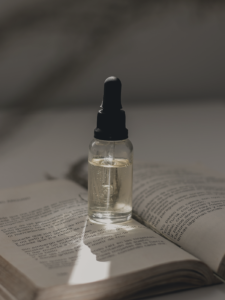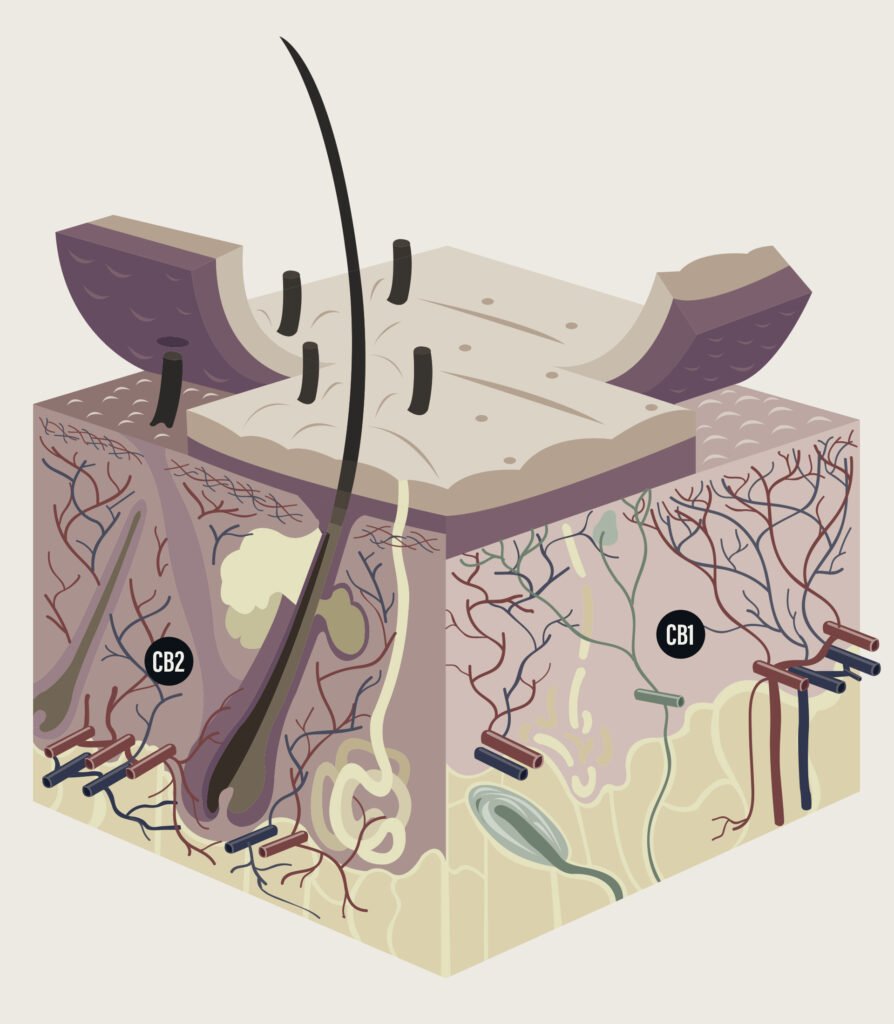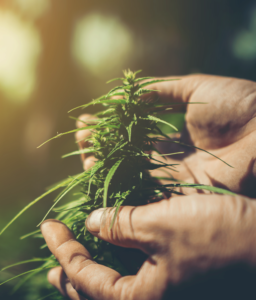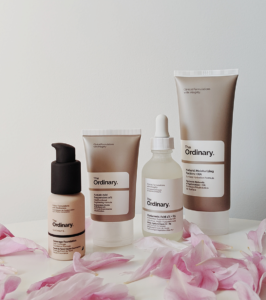
cannabis topicals: the skin science you need to know to make and support better products
Topical products are possibly Canada’s most exciting, yet most misunderstood cannabis 2.0 category. They hold significant potential if properly conceived, developed and made to satisfy real consumer need states.
 Despite the race to bring weed-infused creams, oils, balms, bombs, salves and salts to a relatively small, yet underserved category of the regulated market, there is still plenty of ambiguity surrounding these skin-based cannabis delivery products at both the consumer and business levels. Producers and brands struggle to answer fundamental questions about the products they have made, and retailers are caught in the middle as they work to allay consumer apprehensions about their wares: How are they used? What makes them work? Will they get you high? These are all commonplace lines of inquiry at the dispensary level. The trickle-back effect of this consumer and retailer uncertainty about cannabis topicals has left many licensed producers in Canada scrambling to address hard questions about their products, that they may not have immediate answers to.
Despite the race to bring weed-infused creams, oils, balms, bombs, salves and salts to a relatively small, yet underserved category of the regulated market, there is still plenty of ambiguity surrounding these skin-based cannabis delivery products at both the consumer and business levels. Producers and brands struggle to answer fundamental questions about the products they have made, and retailers are caught in the middle as they work to allay consumer apprehensions about their wares: How are they used? What makes them work? Will they get you high? These are all commonplace lines of inquiry at the dispensary level. The trickle-back effect of this consumer and retailer uncertainty about cannabis topicals has left many licensed producers in Canada scrambling to address hard questions about their products, that they may not have immediate answers to.
We have composed this cannabis topicals product and skin science guide to help establish a baseline knowledge for producers looking to make or support a topical in market, as well as to raise education and awareness for interested consumers and retailers. It’s time to scrub, rinse and clear up the myths and misconceptions.
SKIN 101
 Skinsational
Skinsational
The skin is the largest bodily organ and an effective barrier against viruses, pollutants, radiation, etc. It helps regulate body temperature via sweat, excrete toxins, synthesize vitamin D3, absorb nutrients, and connects us to the world through sensory feedback. Unlike other organs, skin has a lot of independence, relying largely on itself to produce regulating hormones, immune cells for repair, and the endocannabinoids that help balance other functions. Needless to say, it pays off to take good care of this vital part of the body! Many businesses seem to understand this imperative, given that the global skincare market is expected to rise to around $189.3 billion by 2025 (Statista, Global Skincare Market Size), a pie that we think more cannabis LPs in Canada are aiming to slice themselves a piece of in 2021.
Complex Simplicity
Even though the skin is relatively thin, it is made of 3 complex layers that contain cells with specialized functions. The first layer is called the epidermis and is primarily made of keratinocytes (you might have heard of keratin) that are arranged in a tightly woven pattern that keeps skin waterproof and protects the body from outside threats. Due to the protective qualities of the epidermis, effective cannabis topicals include ingredients that help increase the permeability of this outer armour to allow cannabinoids to properly interact with the body in the next level down. Feel like you are in grade 8 science class yet? Below the epidermis is an intricate layer called the dermis. This is where the real magic of topicals happens. The dermal layer contains a multitude of organelles or “mini-organs” like nerve cells, capillaries, lymph vessels, hair follicles, sebaceous glands, sweat glands, immune cells, sensory nerves and more. Each of these mini-organs play a unique role in maintaining skin function and balance. Each of these structures contain their own cannabinoid interaction points, called CB1 and CB2 receptors.
Feel like you are in grade 8 science class yet? Below the epidermis is an intricate layer called the dermis. This is where the real magic of topicals happens. The dermal layer contains a multitude of organelles or “mini-organs” like nerve cells, capillaries, lymph vessels, hair follicles, sebaceous glands, sweat glands, immune cells, sensory nerves and more. Each of these mini-organs play a unique role in maintaining skin function and balance. Each of these structures contain their own cannabinoid interaction points, called CB1 and CB2 receptors.
One may wonder why the skin has its own cannabinoid receptors already built in and ready to receive the helpful effects of external THC and CBD. This is because the body produces its own set of cannabinoid-type chemicals called endocannabinoids, which help moderate the function of the various mini-organs in the dermis. Endocannabinoid receptors are not a perfect molecular match for external cannabinoids, but they are close enough to allow interaction. What makes cannabis topical products so exciting for the nascent Canadian market are new segments of consumers who will learn that external inputs to these receptors can mimic and influence their natural actions to support health function – but we will get to that…
The last of the three skin layers is called the hypodermis (also known as the subcutaneous layer), which contains larger blood vessels and fatty tissues. While generally not relevant to the effects of cannabis topicals, the hypodermis serves it’s own important functions as both a buffer and connective substrate between the sensitive organelles of the dermis and the rest of the body.
THE ENDOCANNABINOID SYSTEM
 Balancing Act
Balancing Act
As a part of how the skin self-regulates, endocannabinoids work to detect and mitigate imbalances in the skin. Endocannabinoids, like anandamide (a close analog to tetrahydrocannabinol or THC), are released in various amounts, depending on specific need states. These then act on cannabinoid receptors and their associated organelles or cells to help restore normal or “healthy” function.
Here is an example. Let us say the immune cells in your skin are having trouble decreasing inflammation related to an acute or chronic injury. The CB1 and CB2 receptors located there will moderate the release of endocannabinoids that help those immune cells do their jobs properly. Receptors work the same way with nerve fibers that are having difficulty reducing pain or itching sensations. Basically, endocannabinoids are the response system to all kinds of disturbances in the skin, from trauma lacerations to long-term eczema. When the skin is in a state of balance (homeostasis) CB1 and CB2 receptors will generally remain closed. As certain mini-organs of the skin (like sebaceous glands or nerve fibers) enter a state of imbalance or distress, these receptors have been found to “open” and signal the endocannabinoid system (ECS) to activate. Here is where it gets interesting. The ECS is not perfect. For certain individuals with problematic skin, the ECS does not quite get the job done. Pimples, acne, and other conditions can manifest as imbalances are not checked. As we age, the ECS also becomes less effective at supporting skin balance -endocannabinoid-deprived CB1 and CB2 receptors remain open more often as they signal for support to maintain healthy skin functions. Enter cannabis topical products (Research Gate, The endocannabinoid system of the skin in health and disease: novel perspectives and therapeutic opportunities).
How do cannabis topical products work with the endocannabinoid system?
While the (ECS) is integrated throughout the entire body, cannabis topicals exert their effects at a localized or “topical” level via the skin. Typically blended with other natural and botanical ingredients, they leverage the benefits of “phytocannabinoids,” which are plant-based exogenous cannabinoids. They can interact with the ECS in the same way as their endocannabinoid counterparts; influencing integrated organelles like nerve fiber bundles, immune cells, etc. that need extra help to manage disturbances. When applied topically via formulated oils, balms, lotions, and spray products, phytocannabinoids such as THC, CBD, CBG and CBN can interact with CB1 and CB2 receptors upon absorption into the dermal layer of the skin, to produce unique, stimulating and/or inhibiting effects that help promote balance in the skin and body. These cannabinoid skin supplements can also be used proactively to maintain balance by ensuring the skin has enough available cannabinoid components to handle any potential skin disturbances (NCBI (gov): TRP Channel Cannabinoid Receptors in Skin Sensation, Homeostasis, and Inflammation).
WHAT MAKES AN EFFECTIVE CANNABIS TOPICAL?
Do all topicals have the same effect?
While research at a commercial level is still limited, existing evidence suggests that cannabis topical products do not all work in the same way. Because the skin is a much more complex entry point into the body than other entry points like the lungs or stomach, the effects of cannabis topicals generally vary to a greater degree.
Besides the cannabinoid types in the formulation, multiple factors determine how cannabinoids like THC and CBD activate in the skin and beyond, including concentration, bioavailability, absorptive properties, carrier state (solid vs fluid), the presence of penetration enhancers, and synergies with the other ingredients in the topical blend. The typical topical (see what we did there) product constant is that most are designed to have localized effects on the dermal layer of the skin where CB1 and CB2 receptors reside. This means that the THC or CBD will usually not travel beyond area of application. This also means the stakes are high for cannabis LPs to ensure that their topical products are formulated well enough to penetrate the epidermal and dermal layers to achieve activation of the endocannabinoid system. An exception to this limitation can be found in transdermal topical technologies, which utilize adhesive patches or special formulation techniques to develop creams that can deliver cannabinoid nanoparticles, which are small enough to be absorbed into the bloodstream through capillaries in the dermis.
So why aren’t all topicals made to be transdermal? You probably guessed it – they can get you high. If a transdermal topical contains any ratio of THC in it’s formulation it can slip past the intricate network of the skin layers and enter the bloodstream to exert psychoactive effects on the nervous system. In some cases, this could be a desirable effect, however, many consumers are looking for localized skin improvement or pain relief without the consequences to their mental state.

Absorption is key
Formulation matters a lot in determining a cannabis topical’s ability to reach and interact with cannabinoid receptors.
Transdermal technology aside, only a select few ingredients are capable of stimulating the tightly woven cells of the epidermal layer to relax and allow other nutrients and cannabinoids into the dermal layers, where CB1 and CB2 receptors reside.
For example, herbs like lavender, peppermint, and rosemary oil are excellent stimulus compounds because they contain special organic building blocks called terpenes (like limonene, linalool and menthol) that temporarily dilate or loosen the cellular structure of the epidermis (NCBI (gov): Transdermal Drug Delivery Enhancement by Compounds of Natural Origin), to allow the entry of oil nutrients and THC/CBD. The skin penetrating aspects of terpenes are further enhanced depending on their combination with lighter and more effective carrier oils that are absorbed easily (typically low or non-comedogenic). Oils containing linoleic, palmitic, and stearic fatty acids are generally lighter, more hydrating and more absorbent.
For example, ethyl hempate, a hemp seed oil extract bound to an ester carrier, has a very low comedogenic value, making it an excellent helper to get fatty oils, nutrients, and cannabinoids into the skin without clogging pores. Interestingly, it sometimes makes sense for topical products to combine ingredients with low and high comedogenic values. Balm and salve products will often contain beeswax which acts as a humectant (additive to seal in moisture). Once cannabinoids, oils and nutrients have been absorbed these natural “sealants” saturate the skin, dry, and form lipid barriers to lock in the hydration and nutrients.
Botanical blueprint
One key indicator of an effective cannabis topical is that it contains naturally derived ingredients. Natural oils, rich in key fatty acids (like linoleic acid) can often be more easily absorbed than synthetic ones (NCBI (gov): Skin Penetration Enhancement by Natural Oils for Dihydroquercetin Delivery).
Using natural, plant-based terpenes instead of artificially made epidermal penetration enhancers will typically result in less potential skin irritation and more absorptive benefits.
A pleasant side benefit to terpenes is that these amazing little hydrocarbons give infused topical products their natural aromatic qualities. The fresh botanical characteristics of the aromas of naturally derived ingredients far outweighs that of synthetic fragrances in our humble opinion. One of the easiest ways to identify terpenes is by smell association: limonene smells like lemons and citrus fruits, linalool is what gives lavender its scent, pinene smells like pine trees and cones, and beta-caryophyllene has the fragrance of rosemary and hops. Though terpenes are generally extracted from their associated scent sources, they can also be found in various ratios within other organic sources, like the cannabis plant, where they have the potential to interact with cannabinoids.
What’s in your entourage?
Speaking of terpene/cannabinoid interactions, you have likely heard of the mysterious “Entourage Effect.” This documented phenomenon suggests that cannabis effects can be augmented or enhanced by the synergies of multiple cannabinoids and terpenes interacting with one another. This alleged boost in efficacy due to the tandem interaction of organic components within the cannabis plant highlights the benefit of using full or “broad” spectrum distillate in creating a topical product. Compared to isolates, which are a pure concentrate of a single cannabinoid, broad spectrum distillates contain most of the cannabinoids and terpenes extracted from cannabis plants and could result in unique effects. For cannabis LPs who primarily work with refined isolates, some evidence also suggests that re-introducing cannabis or non-cannabis derived botanical terpenes may create these same types of effect synergies.
THC vs CBD?
 Many cannabis topicals currently in market use non-psychoactive CBD (cannabidiol) as their base. CBD has been shown to contribute to relieving several mental and biological conditions from anxiety and stress to pain and insomnia.
Many cannabis topicals currently in market use non-psychoactive CBD (cannabidiol) as their base. CBD has been shown to contribute to relieving several mental and biological conditions from anxiety and stress to pain and insomnia.
If CBD is so great then why would a brand choose to use THC (tetrahydrocannabinol) in their product when it likely will not exert any of its psychoactive potential (due to the generally localized effect of cannabis topicals)? While CBD is a wonderful compound, indications have shown that THC can also provide impactful topical benefits for individuals who want to help promote healthy and balanced skin or employ localized pain relief.
When it comes to the question of whether THC topicals are intoxicating, most data indicates that they are not. When applied externally, as directed by Health Canada’s cannabis regulations, most topical formulas are designed to deliver THC to the dermis only, which exerts a localized effect on cannabinoid receptors (CB1/CB2). Again, the exception here are transdermal products where the THC molecules involved have been made small enough to be absorbed by dermal blood vessels and cross the blood-brain barrier.
Because of the Entourage Effect, the question may not be whether to choose THC or CBD but to decide how to combine them together and in what ratio. Many regulated topical brands already in market have deployed products that leverage combinations of the two predominant cannabinoids. Ratios like 1:1 and 8:1 (CBD to THC) have been shown in some instances to have dramatic effects compared to either substance on its own. Some research also suggests that THC may be more of a receptor activator whereas CBD may be more of a receptor modulator.
TOPICAL TRENDS
Mainstream shift toward natural
 In recent years, natural and clean beauty products have continued to trend (Investopedia: New Generation of Consumers Increase Demand for Natural Products). Product types that were at one time only found only at natural health food and niche specialty stores, are now available at mass market retailers and higher end beauty retailers.
In recent years, natural and clean beauty products have continued to trend (Investopedia: New Generation of Consumers Increase Demand for Natural Products). Product types that were at one time only found only at natural health food and niche specialty stores, are now available at mass market retailers and higher end beauty retailers.
Even big, long-established players are getting on board with simple, clean and naturally positioned beauty and skin care products. Estée Lauder for one partnered with DECIEM, the creators of The Ordinary to leverage their affordable, clean, commodity-based and natural leaning skin and hair care brand that has proven to be highly sought in the beauty industry.
While it may seem obvious that a natural plant-based active ingredient like cannabis would demand an equally natural formulation, plenty of options for human-made delivery systems exist to fledgling cannabis companies who are walking the line between traditional cosmetics and apothecary remedies.
A look at the online BC Cannabis Store confirms that the landscape is mixed – transdermal tech and high-shear blended creams meet organic oils and botanical terpenes. Though synthetic additives can serve their own purposes, the general cannabis consumer trend is toward the use of natural and organic ingredients, which, as we have detailed, can be highly effective delivery systems for THC and CBD alike.
The new fastest growing category
One thing is certain, the topicals segment is obviously the most underserved of all the categories with only 8, 10, and 15 SKUs in British Columbia, Alberta, and Ontario respectively as of late 2020. In our 2021 Canadian cannabis industry predictions report we outline our expectations that this number will quadruple by the end of 2021! This may sound bold but as more and more first time consumers dip their toes into the water that is the regulated cannabis market, the fact is that topicals are one of the least intimidating, most accessible forms of consuming this powerful and useful substance. It is only a matter of time before a large wave of rollouts by LPs rises to meet what we view as an inevitable impending demand.
achieving skinergy
Hopefully this guide to skin science and topicals has helped dispel some of the false assumptions and uncertainties about this less popularized cannabis category, while highlighting a few key aspects of what makes for better and more effective topical products.
For retailers and licensed producers in particular, having this foundational knowledge of the functional aspects of their product’s formulas is critical to understanding their value and positioning against competitors. Having a handle on the how and why of various topicals’ interactions with the skin and body as a whole also allows for enhanced brand communications surrounding their use and promotes greater consumer affinity with these topical brands post-launch.
With so many other considerations to worry about from sourcing child-resistant (CR) packaging and extended-panel labels to allocating variable data and managing homogeneity testing, it pays to speak from a place of confidence regarding the development and promotion of cannabis topicals.




